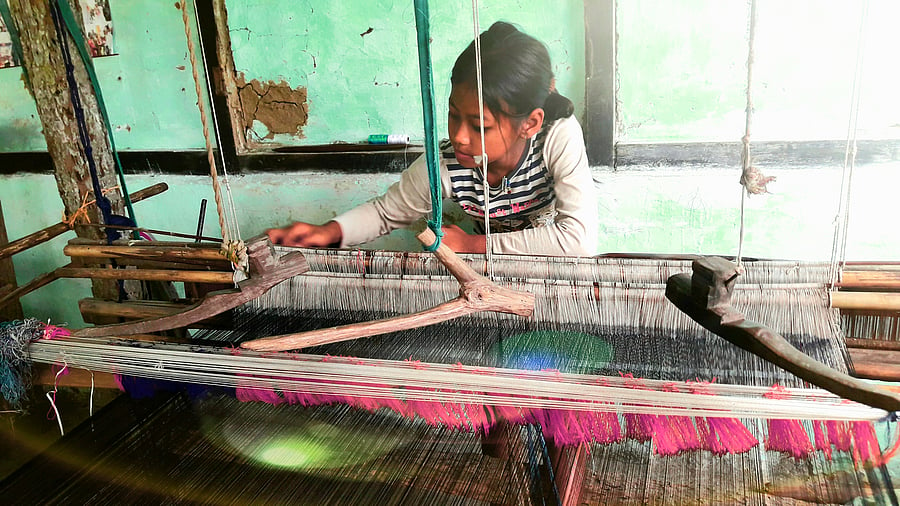
Representative image
Credit: iStock Photo
Chennai: Textile and garment sector in Tirupur, Coimbatore, Mysuru and Bengaluru do not employ child labour below the age of 14 in the organised sector, but they are involved in other areas of the value chain which needs to be addressed, a study commissioned by the National Human Rights Commission (NHRC) concluded.
However, the study conducted among 720 and 790 female respondents in Tamil Nadu and Karnataka respectively, found out that adolescent labour (between the age of 14 and 18) are prevalent in both states and pushed the need to discourage their employment to ensure that they complete their schooling.
The four cities where the study was conducted have a long-standing presence in the textile and garment industry and the report identifies the employment and working conditions of female children in the textile and garment industry in both states.
The surveyed data for Karnataka shows a larger share of workers in the 16-18 years of age category, and this number is distributed over to 14-16 years of age and finally to 18+ years of age.
“According to the premise mentioned earlier, companies in Tamil Nadu are less likely to engage in child labour practices. The next highest workers were of age bracket 14–16 years, followed by 18+ years. Across different age groups, the greater number of workers are local residents,” the study by Dr M Karthik of Institute of Public Enterprise, Hyderabad, said.
Even with an increase in age, the number of local residents increases, thus showing that child labourers are not employed from within the city or state, but from other states, the study added.
Gender specific child labour roles have created a 62.8 per cent presence of girl child workers in agriculture, forestry and fishing sectors of Karnataka with Bengaluru, Raichur, Bellary, Yadgir, and Belgaum emerging as top five districts for employed girls between the ages of 5 and 14 in the informal sector.
While Bengaluru has 29,069 such people, Raichur has 14,705, Bellary has 13,882, Yadgir has 13,812 and Belgaum has 13,301, the report said, adding that the number of working children in the state has sharply increased by 56 per cent over the past 10 years.
Even though 92 per cent of children of the of 6-17 age group in Karnataka attend schools, there is a sharp drop in the 15-17 years group, especially among girls in rural areas.
“Poverty is the primary reason for parents sending their wards for employment. With government interventions and policy changes, child labour in the organised sector has come to an end; however, more stringent laws and frequent visits are required to control child labour in the unorganised sector,” the report added.
The real challenge is to abolish child labour in the unorganised sector. Flying squads at district levels should be set up, and constant monitoring in remote areas will have a tangible impact on the eradication of child labour, the professor added.
Based on the data generated, the findings for Tamil Nadu suggest that among the surveyed respondents of female workers in the textile mills, majority of them are in the age group of 16-18 years (51.0 per cent) and about 28 per cent are adults (above 18 years). Only 20.7 per cent of the workers found to be in the age group of 14-16 years, while 33.6 per cent are Dalits.
Another trend which is noticeable in Tamil Nadu is that nearly 79.3 per cent of workers are not local residents as they are immigrants from different parts of the country, with a large part from Bihar (26.6 per cent), Manipur (17.3 per cent), Aurangabad (10.3 per cent), Cuttack (5.3 per cent), Aizwal (4.4 per cent).
The study suggested a collaborative effort of the private companies and the government to identify other prudent ways of reducing the manufacturing costs, so that there is no pressure on the textile companies to resort to labour-related cost-cutting measures.
India is the second-largest producer and consumer of textiles and apparel in the world, behind China. Approximately 14 per cent of the world's textile yarn and fibre production comes from India.